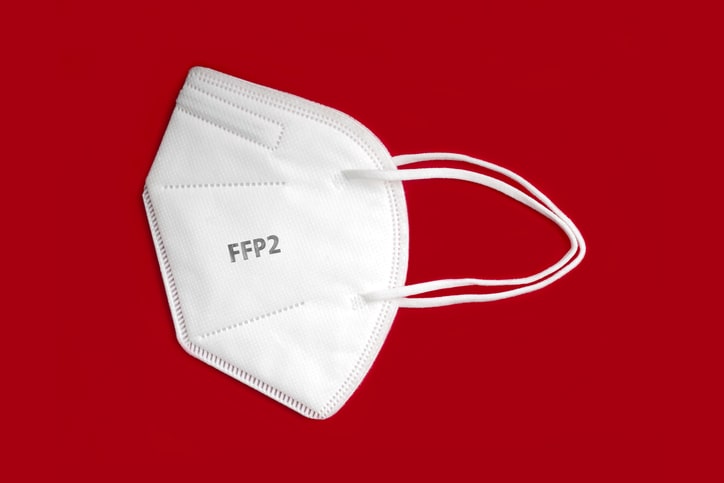
Patients of racial and ethnic minorities face a disproportionate and complex burden of medical, mental health, and social needs. Disparities in healthcare among marginalized patients with kidney disease have been exacerbated by the coronavirus disease 2019 (COVID-19) pandemic. Nearly 50% of patients with kidney failure are Latinx, Black, or Native American/Pacific Islander, and patients in those groups are more heavily impacted with COVID-19 compared with non-Latinx White patients.
In addition, patients with COVID-19 commonly develop multiorgan failure, including kidney failure, and subsequently require renal replacement therapy. Tessa K. Novick, MD, MSW, Katherine Rizzolo, MD, and Lilia Cervantes, MD, described the disparities and difficulties of patient populations with kidney disease in the face of the COVID-19 pandemic, including difficulties associated with aging and homelessness, and among racial and ethnic minorities, immigrants, and refugees. The report was published in Advances in Chronic Kidney Disease [2020;27(5):427-433].
Elderly Population
Older patients have been disproportionately affected by COVID-19, with greater risk for infection, severe complications, and death. In a cohort of 393 patients with COVID-19 in New York City, median age was 62 years; compared with younger patients, elderly patients were more likely to require invasive mechanical intervention, kidney replacement therapy, and die. That pattern is consistent with reports worldwide.
The multifactoral drivers of the variability in infection risk and severity of disease among the elderly are not well understood. Older patients are more likely to have underlying medical conditions, including chronic kidney disease (CKD), which is associated with COVID-19 infection and complications. Approximately 44% of individuals more than 70 years of age have CKD, compared with 9.2% of adults 40 to 59 years of age.
Many older adults live in long-term care facilities, settings that are high risk for COVID-19 outbreaks. Among older adults who live alone, many rely on visiting caregivers. In addition, older adults often rely on public transportation, which was identified as a factor in the spread of COVID-19 early in the pandemic.
As the pandemic persisted, shelter-in-place orders forced older adults to stay indoors and remain inactive, often in solitary settings, conditions that exacerbate frailty and depression. Frailty is associated with increased risk of hospitalization and mortality among patients with CKD and kidney failure, and allograft loss among kidney transplant recipients. Finally, older adults may not have access to the technology required for telemedicine, and hearing loss and low health-literacy may also negatively affect communication during telephone medical visits.
Unstable Housing
Among unstably housed populations, COVID-19 is particularly prominent. Living in shelters and making numerous moves prohibits social distancing and limits opportunities for frequent hand washing and other hygiene measures to prevent infection. Transmission of COVID-19 in shelters has resulted in clusters of the disease in large cities. Due to higher prevalence of comorbidities among the homeless population, mortality among unsheltered homeless adults is 10 times higher than in the general population.
Having kidney disease may increase the risk for COVID-19 among the unsheltered population. A San Francisco study found that patients with CKD utilize acute care at higher rates than stably housed counterparts, increasing the risk for exposure to COVID-19. Patients requiring dialysis treatment may have increased risk for exposure due to increased reliance on emergency departments for treatment.
Sex Differences
While the prevalence of CKD is higher in women than in men, the rates of disease progression and kidney failure are higher in men. Early data on COVID-19 mortality rates show a similar trend: In New York City, 42.9 men per 100,000 died compared with 23.1 per 100,000 women. Trends were similar in China and Italy.
The socioeconomic effects of the pandemic is predicted to have an inequitable effect on women. One in three jobs held by women are considered essential, with the highest proportion in healthcare. Women account for 73% of COVID-19 infections among US healthcare workers. Further, women shoulder the majority of the needs of child care at home. Women with CKD are more likely to belong to a racial or ethnic minority, be a single parent, or have low income and low-level education, contributing to a higher risk of exposure to infection as well as a higher burden of economic challenges due to lost employment and child care needs.
Race and Ethnicity
The incidence of kidney failure is 3.5 times higher for Blacks and 1.5 times greater for Latinx, and both communities have higher rates of progression to kidney failure. Limited data on the COVID-19 pandemic reveal similar trends. In the United States, Black, Latinx, and Native Americans make up a disproportionate number of COVID-19-related deaths. In New York City, the age-adjusted morality rate for COVID-19 for Blacks is double that of White and Asian adults, and the age-adjusted case rate is highest in the Black and Latinx communities.
Refugees, Immigrants, and Undocumented
Undocumented immigrants are disproportionately essential workers, facing daily exposure to COVID-19. Immigrants are often employed in low-paying jobs in the service and hotel industries and are among those who have been out of work since the start of the pandemic in the United States. The undocumented population does not benefit from economic relief packages, adding to financial strain. Many will face having to forego spending on medications, healthy food, and other healthcare needs.
There are an estimated 5500 to 8857 uninsured immigrants with kidney failure in the United States, a population that relies largely on hospitals for emergency-only dialysis. Such treatment is associated with worse morbidity and mortality, and presents an economic burden on the medical system.
In summary, the authors said, “The COVID-19 pandemic is re-exposing an underlying and long-standing set of critical weaknesses in our nation’s healthcare system, especially relevant to the stark burdens already faced by many underserved populations. Numerous complications and struggles with kidney disease have unfortunately intensified in patient groups and have risen to the forefront during a time of great patient need and distress. The risk for the elderly, the homeless, differences between sexes, and overwhelming threats to racial, ethnic, and underserved minorities and immigrants are compounding. All together, the broad and complex set of interconnected disparities, both nationally and globally, will require a similarly broad and complex set of solutions. As the nation pulls together during these times of great uncertainty, it will be our continued responsibility to move the needle forward on the inequities faced by marginalized populations that have been unheeded far too long.”
Takeaway Points
- The coronavirus disease 2019 (COVID-19) pandemic has exposed racial, ethnic, socioeconomic, age, and sex-related disparities in the healthcare system in the United States.
- In a report in Advances in Chronic Kidney Disease, disparities associated with the additional burdens in the management of kidney disease in those populations imposed by the pandemic are explored.
- Risks for elderly, homeless, and underserved minorities have been compounded by the strains on the healthcare system associated with the pandemic; putting patients with kidney disease at increased risk for adverse outcomes.







 © 2025 Mashup Media, LLC, a Formedics Property. All Rights Reserved.
© 2025 Mashup Media, LLC, a Formedics Property. All Rights Reserved.